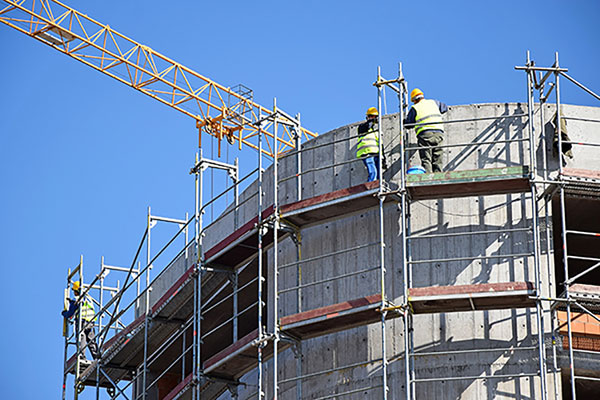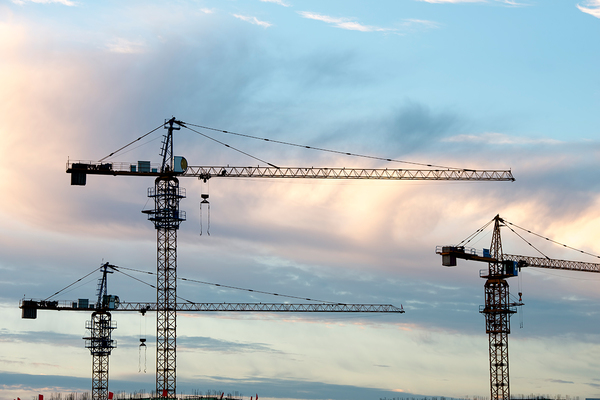You are viewing 1 of your 1 free articles
Lies, damned lies and housebuilding statistics
ANALYSIS: Housebuilding statistics are not giving a reliable picture of the market, claim industry bodies. Pete Apps investigates

“We just don’t look at the official housebuilding figures at all,” says David O’Leary, head of policy at the Home Builders Federation (HBF). “We have kind of disregarded them.”
Given his position, this statement may sound surprising. But it represents mounting distrust of the official figures from the Department for Communities and Local Government (DCLG).
Last week, they showed housebuilding dipped slightly in 2016, and for the financial year 2015/16 they show 139,860 completions and 142,210 starts. But another set of figures from the same department contradicts this. The ‘net additions’ release reported 163,940 new builds for the same period – a gap of 24,000 homes. So why the discrepancy?
Stark shortcomings
The official housebuilding statistics are distrusted by the HBF due to the way they are pulled together. Local planning departments provide numbers to government, which totals them to create the overall figure. But planning departments tend to get their figures from warranty providers, such as the National House Building Council (NHBC). Mr O’Leary says that as the market for warranty providers has widened, these returns have become less reliable, with planners not receiving information from all firms working in their area. “That would tie in with the fact that in areas like Birmingham and London, the gap between new build and net additions statistics is huge.”
Mr O’Leary says the shortcomings are so stark, they do not even provide a reliable indication of trends. “The difference [between new supply and net additions] is sometimes 1% or 2%, sometimes 20%,” he says.
While the new build figure from the net additions statistics is seen as more reliable, there is a serious lag in producing this figure. Net additions numbers are released in November for the previous financial year ending in April. They also show completions, not starts, which says more about the market three years ago than now.
Mr O’Leary says the HBF has begun looking at Energy Performance Certificate updates, which are published quarterly and contain a figure for new build. But these too seem odd. They show 32,510 in 2012 and 213,000 last year – out of step with all other measures.
READ MORE: APPLES AND PEARS
The CIH’s John Perry breaks down various house building measures
There is also a problem with the way the official figures split up private, council and housing association delivery. According to the official numbers, housing associations average around 6,000 homes per quarter and in 2015/16 they built 26,770 in the year. But Inside Housing’s analysis – which includes only the top 50 builders – showed 31,988 completions by associations in the same period. More comprehensive figures from the National Housing Federation (NHF) showed 40,124.
“The problem is that column includes some things and excludes others,” says Rob Cowley, data analyst at the NHF. “It includes Section 106 [affordable homes built through the planning system] when clearly allocated to a housing association and it includes market development by housing associations. What it excludes is any Section 106 that has not been clearly allocated. There’s also a slightly cryptic note which says most shared ownership is included in the private sector. We think there is pretty substantial under-reporting.”
As a result, the NHF has started gathering its own data. It has 190 associations inputting, which covers most of the sector’s development output. Last week it released data showing between October and December, associations started 9,700 homes and completed 11,800. Two days later, the DCLG published figures for the same period reporting 5,740 starts and 6,470 completions.
“Having any kind of official statistics termed ‘housebuilding statistics’ when we know these are incorrect obfuscates the issue,” says Mr O’Leary. “Especially if policy is then made on the back of statistics because, for example, ministers look at these figures and think housing associations aren’t building enough.”
Towards clarity
This is not just an academic possibility. In September 2015, then-chancellor George Osborne said housing associations’ building record was “not very impressive”, on the basis of these official statistics. Two months earlier he’d torn up a 10-year rent settlement in the name of reducing the benefit bill and in doing so dismantled associations’ business plans.
Amid this uncertainty about numbers is the government’s pledge to build one million homes this parliament (since revised to the end of 2020). To be properly held to account on this requires clear, authoritative and regular statistics. The UK Statistics Authority recently called for better clarity regarding this pledge. It is also running a review of housebuilding statistics more generally.
It is to be hoped this will produce change. As the economy becomes increasingly uncertain and government changes bed in, accurate statistics on the state of the market have never been more important.
THE VARIOUS MEASURES SCORED
New build dwelling statistics: While these government figures are in-depth (figures include starts, completions and local authority breakdown), it routinely under-reports overall output, and the contribution of associations. 3/10
Net additions (new build): The most authoritative statement, but published by the government only once annually – eight months after the period it covers. 6/10
Energy Performance Certificates: Published regularly by the government, but difficult to navigate and data shows some serious anomalies compared with other measures. 3/10
NHF figures: The most authoritative statement of the sector’s output, but as it has been collected for less than two years it does not show long-term trends. 7/10
NHBC registrations: The earliest indication of housebuilding trends as homes are registered pre-start. But it excludes any homes not registered with the NHBC. 7/10









